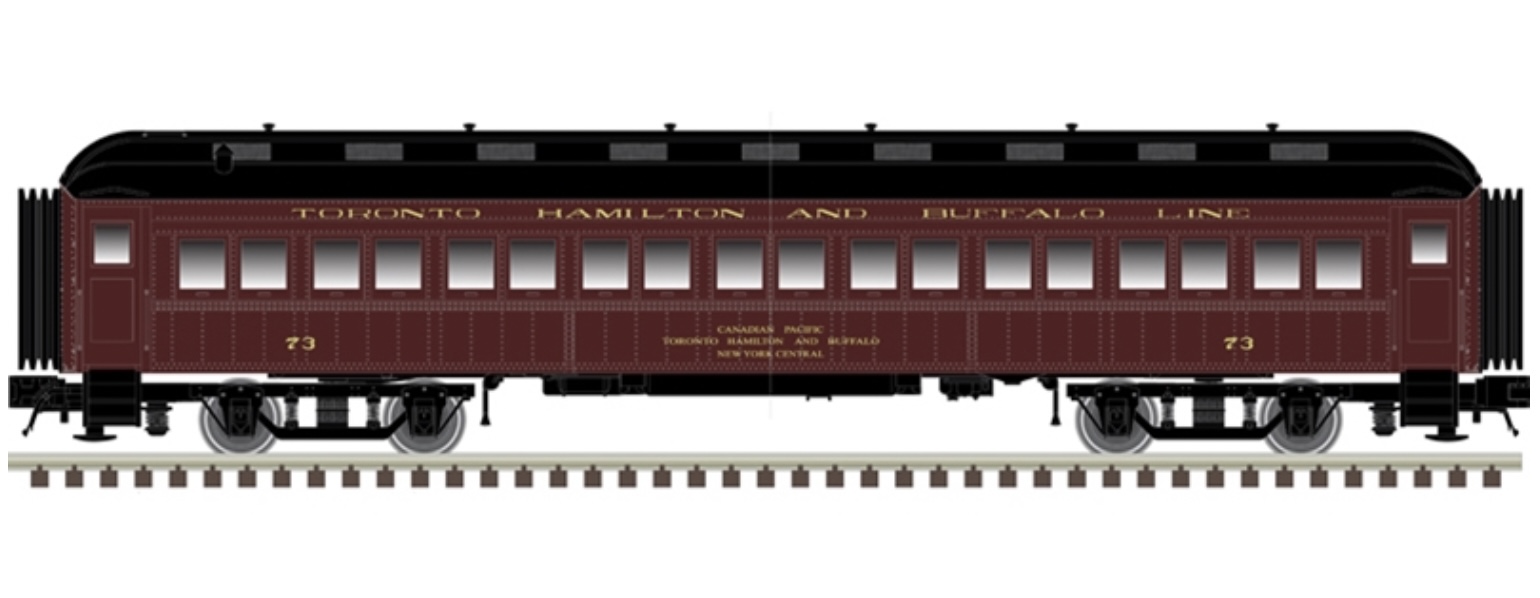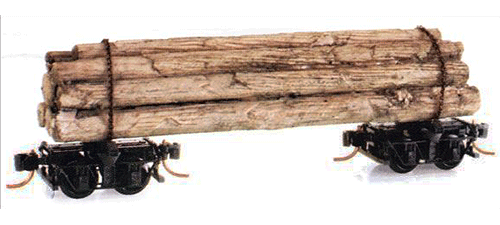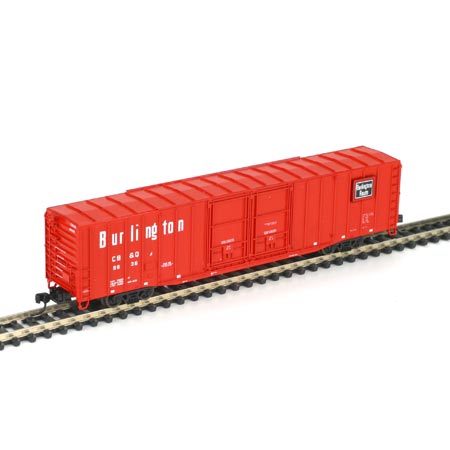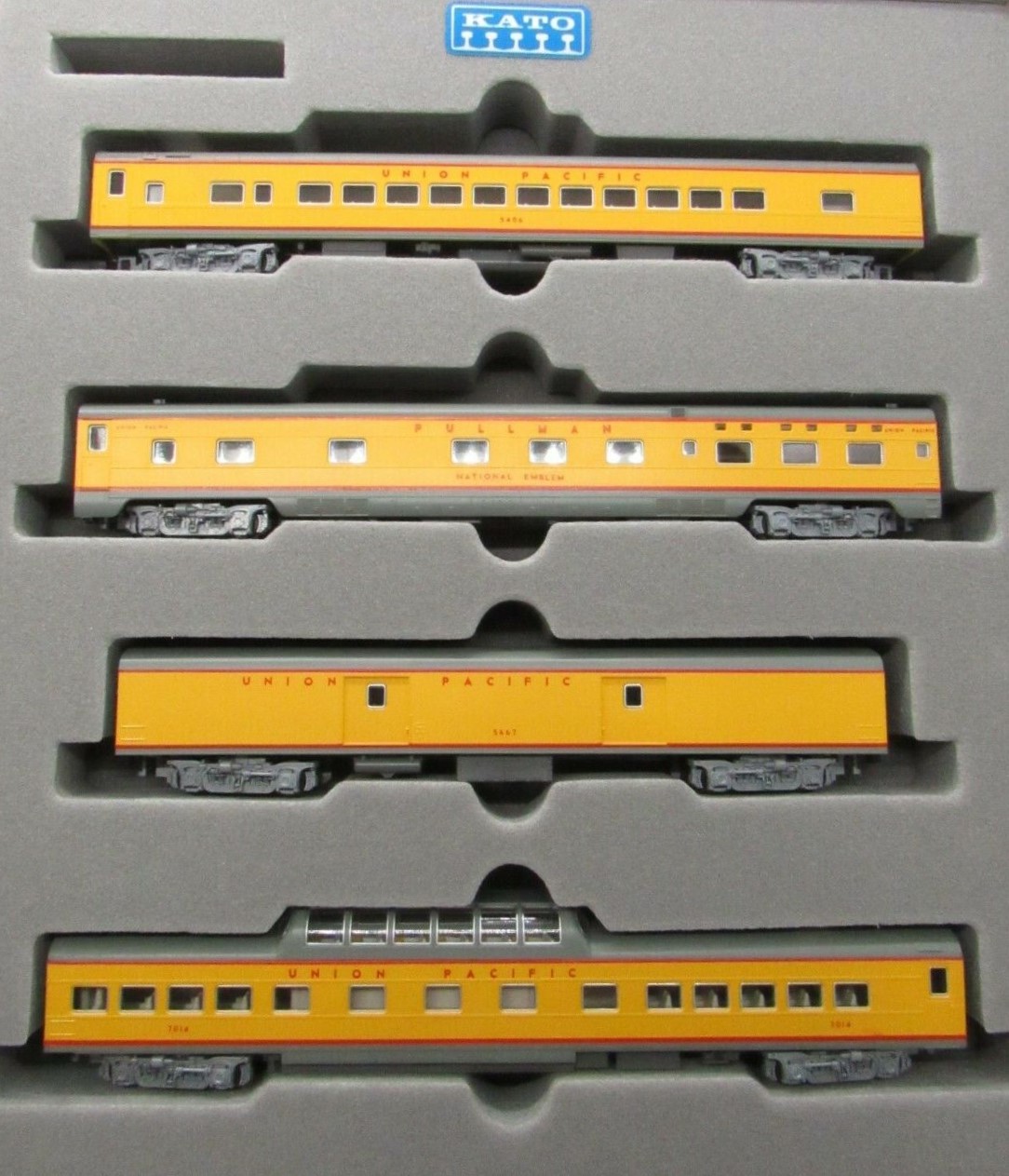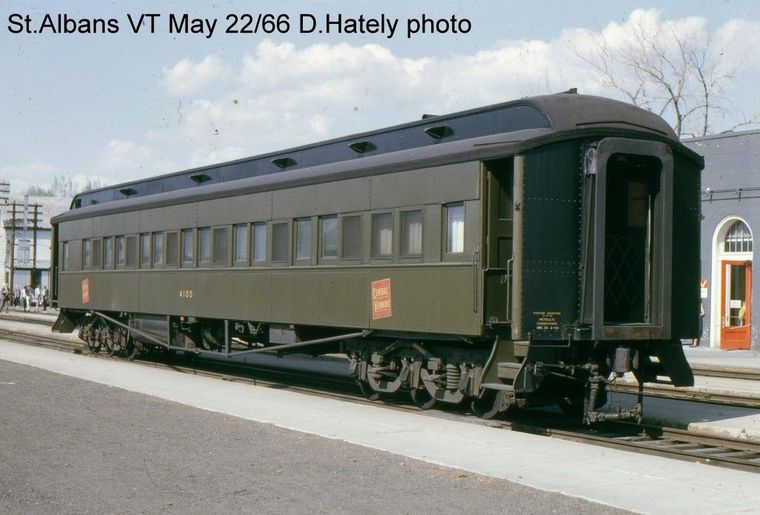Atlas - 50 006 244 - Passenger Car, Heavyweight, ACF Coach - Toronto Hamilton & Buffalo - 72
Click to see the details
market
| Production Type | Announced |
| Stock Number | 50 006 244 |
| Secondary Stock Number | 50006244 |
| Original Retail Price | $43.95 |
| Brand | Atlas |
| Manufacturer | Atlas |
| Body Style | Atlas Passenger Car ACF 60 Foot Coach |
| Prototype Vehicle | Passenger Car, Heavyweight, ACF Coach (Details) |
| Road or Company Name | Toronto Hamilton & Buffalo (Details) |
| Road or Reporting Number | 72 |
| Paint Color(s) | Brown with Black Roof |
| Print Color(s) | Gold |
| Coupler Type | AccuMate Magnetic Knuckle |
| Coupler Mount | Truck-Mount |
| Wheel Type | Injection Molded Plastic |
| Wheel Profile | Small Flange (Low Profile) |
| Announcement Date | 2022-01-20 |
| Item Category | Passenger Cars |
| Model Type | Heavyweight |
| Model Subtype | ACF |
| Model Variety | 60 Foot Coach |
| Prototype Region | North America |
| Prototype Era | NA Era II: Late Steam (1901 - 1938) |
| Scale | 1/160 |
Prototype History:
Heavyweight refers to early 20th century cars built before the late 1930s. They were usually of riveted steel construction with 6 wheel trucks (not always) and often (not always) had large clerestory (learn more about clerestory roofs in our blog: What is a Monitor Roof Passenger Car?) or arch roofs that tapered or curved at the ends. Heavyweights were built with a heavy under frame to hold the car body. The floor was often of poured concrete, which helped give these cars a smoother ride than older wooden-body cars. The rest of the car was built on top of the frame and was structurally irrelevant. Heavyweight passenger cars weigh around 1 ton per foot of length. So a 85' car weighs in the area of 85 tons. Some railroads 'rebuilt' older heavyweight cars with new low profile roofs, thermopane windows, and flashy paint schemes to match the newer lightweights.
Road Name History:
The TH&B was chartered in 1884 to connect Hamilton, Ontario to Fort Erie, just across the border from Buffalo, New York. However, once construction commenced, the goals changed. Ultimately, the TH&B would run from Waterford east to Hamilton and Welland, Ontario. Two branches ran south from this line to reach the lake port cities of Port Cleburn and Port Maitland (both on Lake Erie.) Until 1932, TH&B ran a car ferry operation between Port Maitland and Ashtabula, Ohio. In total, the TH&B was 111 miles long, making it slightly shorter that Richmond Fredricksburg & Potomac. In 1895 ownership was split between Canadian Pacific and three of the New York Central Lines: Michigan Central, Canada Southern and New York Central. TH&B was an important carrier for heavy industries in the Hamilton, Ontario area.
The most modern steam power on the TH&B was a pair of 2-8-4 Berkshires (the only Berkshires on a Canadian railroad) and a pair of 4-6-4 Hudsons. Strangely, none of TH&B’s steamers were equipped with all-weather cabs which were so common in Canada. This may have been due to the influence of NYC’s mechanical department.
TH&B had completely dieselized by 1954: NW2: 4, SW9: 4, GP7: 7, GP9: 3. The three GP9’s were built with boilers for passenger service and with their air tanks mounted on the roof. The GP9’s were also built to run long-hood-forward unlike the GP7’s. This often led to consists that appeared to have the locomotives “elephant walking” when in fact they were running back to back. One of the GP7’s was destroyed in a wreck in 1980. The roster then remained the same until the end. They also never really changed their paint scheme (except for adding the logo to the cab side around 1970.)
New York Central’s share of TH&B passed to Penn Central in that merger. After the collapse of PC and the creation of Conrail, CP Rail picked up PC’s share of the TH&B in 1977. However, TH&B remained a separate railroad for another 10 years until being merged into CPR.
The most modern steam power on the TH&B was a pair of 2-8-4 Berkshires (the only Berkshires on a Canadian railroad) and a pair of 4-6-4 Hudsons. Strangely, none of TH&B’s steamers were equipped with all-weather cabs which were so common in Canada. This may have been due to the influence of NYC’s mechanical department.
TH&B had completely dieselized by 1954: NW2: 4, SW9: 4, GP7: 7, GP9: 3. The three GP9’s were built with boilers for passenger service and with their air tanks mounted on the roof. The GP9’s were also built to run long-hood-forward unlike the GP7’s. This often led to consists that appeared to have the locomotives “elephant walking” when in fact they were running back to back. One of the GP7’s was destroyed in a wreck in 1980. The roster then remained the same until the end. They also never really changed their paint scheme (except for adding the logo to the cab side around 1970.)
New York Central’s share of TH&B passed to Penn Central in that merger. After the collapse of PC and the creation of Conrail, CP Rail picked up PC’s share of the TH&B in 1977. However, TH&B remained a separate railroad for another 10 years until being merged into CPR.
Brand/Importer Information:
In 1924 Stephan Schaffan, Sr. founded the Atlas Tool Company in Newark, New Jersey. In 1933 his son, Stephan Schaffan, Jr., came to work for his father at the age of sixteen. Steve Jr. built model airplanes as a hobby and frequented a local hobby shop. Being an enterprising young man, he would often ask the owner if there was anything he could do to earn some extra spending money. Tired of listening to his requests, the hobby-store owner threw some model railroad track parts his way and said, "Here, see if you can improve on this".
In those days, railroad modelers had to assemble and build everything from scratch. Steve Jr. created a "switch kit" which sold so well, that the entire family worked on them in the basement at night, while doing business as usual in the machine shop during the day.
Subsequently, Steve Jr. engineered the stapling of rail to fiber track, along with inventing the first practical rail joiner and pre-assembled turnouts and flexible track. All of these products, and more, helped to popularize model railroading and assisted in the creation of a mass-market hobby. The budding entrepreneur quickly outgrew the limitations of a basement and small garage operation. Realizing they could actually make a living selling track and related products, Steve and his father had the first factory built in Hillside, New Jersey at 413 Florence Avenue in 1947. On September 30, 1949, the Atlas Tool Company was officially incorporated as a New Jersey company.
In 1985, Steve was honored posthumously for his inventions by the Model Railroad Industry Association and was inducted into the Model Railroad Industry Hall of Fame in Baltimore, Maryland. In addition, Steve was nominated and entered into the National Model Railroad Association Pioneers of Model Railroading in 1995.
In the early 1990s, the Atlas Tool Company changed its name to Atlas Model Railroad Company, Inc.
In those days, railroad modelers had to assemble and build everything from scratch. Steve Jr. created a "switch kit" which sold so well, that the entire family worked on them in the basement at night, while doing business as usual in the machine shop during the day.
Subsequently, Steve Jr. engineered the stapling of rail to fiber track, along with inventing the first practical rail joiner and pre-assembled turnouts and flexible track. All of these products, and more, helped to popularize model railroading and assisted in the creation of a mass-market hobby. The budding entrepreneur quickly outgrew the limitations of a basement and small garage operation. Realizing they could actually make a living selling track and related products, Steve and his father had the first factory built in Hillside, New Jersey at 413 Florence Avenue in 1947. On September 30, 1949, the Atlas Tool Company was officially incorporated as a New Jersey company.
In 1985, Steve was honored posthumously for his inventions by the Model Railroad Industry Association and was inducted into the Model Railroad Industry Hall of Fame in Baltimore, Maryland. In addition, Steve was nominated and entered into the National Model Railroad Association Pioneers of Model Railroading in 1995.
In the early 1990s, the Atlas Tool Company changed its name to Atlas Model Railroad Company, Inc.
Item created by: CNW400
on 2022-01-21 11:30:00
If you see errors or missing data in this entry, please feel free to log in and edit it. Anyone with a Gmail account can log in instantly.
If you see errors or missing data in this entry, please feel free to log in and edit it. Anyone with a Gmail account can log in instantly.


